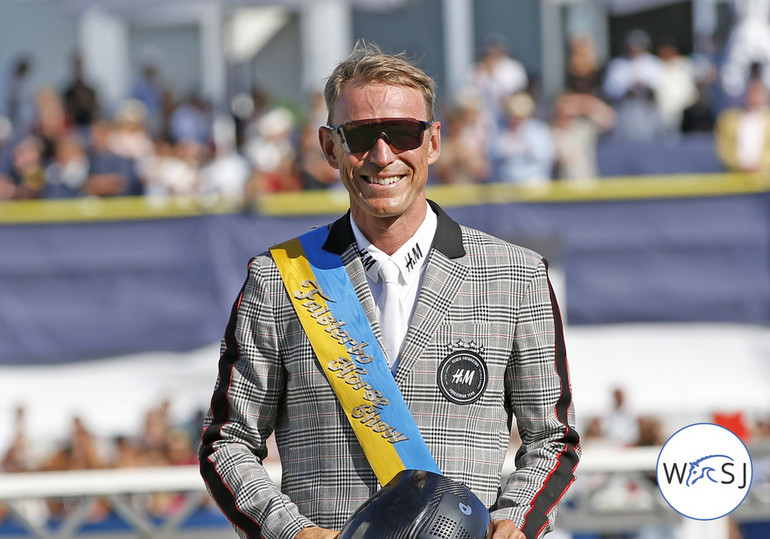In the south of Sweden, a group of jumping bred yearlings was recently turned out together with Icelandic horses to roam free over a huge area of hundred acres. Over the summer, the group will be closely monitored. Data will be collected in order to document how much the herd moves, and how the movement affects the young horses’ development. Behind the project is reigning European Champion Peder Fredricson and his father Ingvar Fredricson. World of Showjumping met Peder to learn more.
“Originally, this is my father Ingvar’s project. He is a veterinarian professor and had this idea for a long time,” Peder tells. “My father believes that young horses, from when they are foals up until they are three- or four-years-old, build the foundation for their future sport bodies as well as their strength,” Peder explains. “The place where the young horses are is fantastic, but there is not much food in one spot so they need to move a lot to get enough to eat. In order for us to see how much they move, and keep a close eye on them, they are monitored 24 hours a day. We are also developing a system where the horses can be followed online.”
The group of yearlings will stay outside over the summer. “It is quite hard for them, because they really need to move for their food. While it does not necessarily make them better jumpers, I would like to believe that these horses will develop strong bodies, and that their hoofs will become more solid,” Peder says.
There are several studies on the benefits horses have from moving on different surfaces, and from moving a lot. “Soundness is a huge thing for us riders these days. If the horses are sound, they will perform better and more consistent – not to forget that they will have a much longer career,” Peder says. “The soundness of a sport horse makes a big difference for its career, and of course also for the rider and the owner.”
Magnus Skulason, the owner of the Icelandic horses and a multiple World Champion, says he can feel a positive difference in those horses that have grown up in a more natural environment and under harsher conditions. “It will be interesting to see the results with the warmblood horses,” Peder says.
“In one way there is nothing special at all about this, because most people turn their horses out,” Peder continues. “This is more to really monitor them, and to see how much they actually move – comparing that data to horses that grow up in a smaller paddock or fenced area. We want to look into whether or not the horses get stronger, and if the hoof quality gets better. I think the quality of the hoof and the importance of a good farrier is often underestimated. Moving a lot, and on different surfaces is the first step to get the hoof mechanism working. Perhaps, if the hoofs get really strong at this early stage there is a chance that you can wait with putting the shoes on. I think that in the long run that could also benefit the future health of the horses.”
Depending on the results, Peder sees this project growing into an international co-operation in the future. “In Sweden we have a lot of land in comparison to other smaller European countries that breed a lot. In the future, the breeders could perhaps bring their young horses to Sweden to grow up on our land and then take them back later,” Peder says. “Because the longer you work with horses, the more you see how important their health is and where it all begins.”
Text © World of Showjumping by Nanna Nieminen
Photos © Jenny Abrahamsson for World of Showjumping and Lotta Brundin Gyllensten / lottapictures.com
No reproduction without permission, copyright © World of Showjumping










